Mirella Sichirollo Patzer's Blog, page 6
November 22, 2019
The First Women in the Theatre - Elizabeth Knepp (By author Deborah Swift)
Elizabeth Knepp (sometimes known as Mary Knepp) was born Elizabeth Carpenter and records show she married Christopher Knepp, whom Pepys calls a 'jockey' but was probably a horse dealer or horse hirer, at Knightsbridge in 1659. I took the liberty of giving her the nickname ‘Bird’ in the novel as she loved to sing, and there are so many other Marys and Elizabeths in Pepys’ diary.
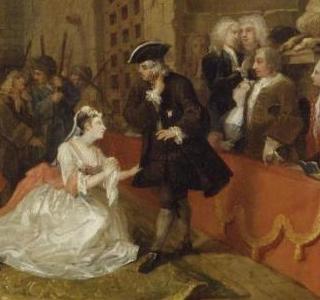 Beggars OperaThere are 108 references to Mrs Knepp in Pepys’ diary. Actresses in those days were always known as ‘Mrs’ whether they were single or married. In the seventeenth century, status was always conferred on a woman by the man. Thus Pepys always refers to his wife Elisabeth as ‘my wife’. Although this seems in our ears to diminish her, in fact this is not an insult; it was designed to confer on her a status not accorded to his servants who were referred to as Dolly, or Deb, or Jane. The theatre was the one place where this did not hold sway – female actors were always called ‘Mrs’ as a mark of respect.
Beggars OperaThere are 108 references to Mrs Knepp in Pepys’ diary. Actresses in those days were always known as ‘Mrs’ whether they were single or married. In the seventeenth century, status was always conferred on a woman by the man. Thus Pepys always refers to his wife Elisabeth as ‘my wife’. Although this seems in our ears to diminish her, in fact this is not an insult; it was designed to confer on her a status not accorded to his servants who were referred to as Dolly, or Deb, or Jane. The theatre was the one place where this did not hold sway – female actors were always called ‘Mrs’ as a mark of respect. Pepys first met Elizabeth Knepp on 6th December 1665; and he described her as:'pretty enough, but the most excellent, mad-humoured thing, and sings the noblest that I ever heard in my life.’
Christopher Knepp, her husband, on the other hand, is described as:‘an ill, melancholy, jealous-looking fellow’.
So grew the first inkling of a conflict I could use in my novel. Christopher Knepp seemed to me the sort of man who would definitely not approve of his wife taking to the stage!
Pepys had an absolute passion for the theatre, and his diary for 1666-68 is full of references to the theatre and particularly to Mrs Knepp, including mentions of their amorous flirtations, and passages about how much he enjoyed their musical evenings and especially her singing. My impression from the diary is that they genuinely liked each other, and this was one of the things that attracted me to writing about her.
 PepysThe professional actress was a new phenomenon in the 1660s. Up until the seventeenth century, women had no reflections of themselves in entertainment; all female roles were played by boys. The first female on the English stage was Margaret ‘Peg’ Hughes, who played Desdemona in a production of Othelloin 1660. Only two months before, the role had been played by a boy, and the thought of this upheaval in the theatre led me to create the character of Stefan. Being an actress in this era was a way of both gaining and losing power –a woman was able to behave on stage in a powerful way, but also women were still seen as commodities; an attraction or novelty to please those that mattered at the time, i.e men.
PepysThe professional actress was a new phenomenon in the 1660s. Up until the seventeenth century, women had no reflections of themselves in entertainment; all female roles were played by boys. The first female on the English stage was Margaret ‘Peg’ Hughes, who played Desdemona in a production of Othelloin 1660. Only two months before, the role had been played by a boy, and the thought of this upheaval in the theatre led me to create the character of Stefan. Being an actress in this era was a way of both gaining and losing power –a woman was able to behave on stage in a powerful way, but also women were still seen as commodities; an attraction or novelty to please those that mattered at the time, i.e men. London 1660'sIn this period the theatre was one of the few ways for women to transcend social boundaries. Through Pepys’ diaries we can witness Nell Gwynne, rising through society from bawd’s daughter to mistress of a king. Evidence shows Nell Gwynne certainly had a mind of her own and used her position on stage to advance herself, and of course now she has achieved some sort of national status. In Pepys' diary, Elizabeth Knepp is invited to musical soirées with Pepys and his civil-servant friends. Being in the theatre conferred a ‘celebrity’ status not available to other women, and just as today, celebrities were sought out by the upper echelons of society.
London 1660'sIn this period the theatre was one of the few ways for women to transcend social boundaries. Through Pepys’ diaries we can witness Nell Gwynne, rising through society from bawd’s daughter to mistress of a king. Evidence shows Nell Gwynne certainly had a mind of her own and used her position on stage to advance herself, and of course now she has achieved some sort of national status. In Pepys' diary, Elizabeth Knepp is invited to musical soirées with Pepys and his civil-servant friends. Being in the theatre conferred a ‘celebrity’ status not available to other women, and just as today, celebrities were sought out by the upper echelons of society.

Elizabeth Knepp played major and minor roles in a range of productions of the 1660s and 1670s, including the famous role of Lady Fidget in Wycherley's The Country Wife at Drury Lane in 1675.Beyond the scope of my novel, she is thought to have been a mistress of Sir Charles Sedley, who was a notorious rake and libertine, part of the ‘Merry Gang’ gang of courtiers which included the Earl of Rochester and Lord Buckhurst. She probably provided Pepys with backstage gossip and inside insights into a world he was avid to know more about. She supplied him with the theatrical and social gossip of the day, and when the theatres were closed down for the plague, took part in evening entertainments alongside him, as an equal.
 Deborah lives in North Lancashire on the edge of the Lake District, a beautiful area made famous by the Romantic Poets such as Wordsworth and Coleridge. In the past she used to work as a set and costume designer for theatre and TV, so she enjoys the research aspect of creating historical fiction, something she loved doing as a scenographer. Each book takes about six months of research before she is ready to begin writing. More details of her research and writing process can be found on her website. Deborah likes to write about extraordinary characters set against the background of real historical events.Deborah’s Social Media links: Twitter https://twitter.com/swiftstoryFacebook: https://www.facebook.com/authordeborahswift/Website www.deborahswift.comPinterest https://www.pinterest.co.uk/deborahswift1/
Deborah lives in North Lancashire on the edge of the Lake District, a beautiful area made famous by the Romantic Poets such as Wordsworth and Coleridge. In the past she used to work as a set and costume designer for theatre and TV, so she enjoys the research aspect of creating historical fiction, something she loved doing as a scenographer. Each book takes about six months of research before she is ready to begin writing. More details of her research and writing process can be found on her website. Deborah likes to write about extraordinary characters set against the background of real historical events.Deborah’s Social Media links: Twitter https://twitter.com/swiftstoryFacebook: https://www.facebook.com/authordeborahswift/Website www.deborahswift.comPinterest https://www.pinterest.co.uk/deborahswift1/BUY THE BOOKAmazon link mybook.to/EntertainingMrPepysKobo link https://www.kobo.com/gb/en/ebook/entertaining-mr-pepys-1Waterstones link https://www.waterstones.com/book/entertaining-mr-pepys/deborah-swift/9781786154156









Published on November 22, 2019 23:00
October 1, 2019
Sonora Webster Carver - Horse Diving
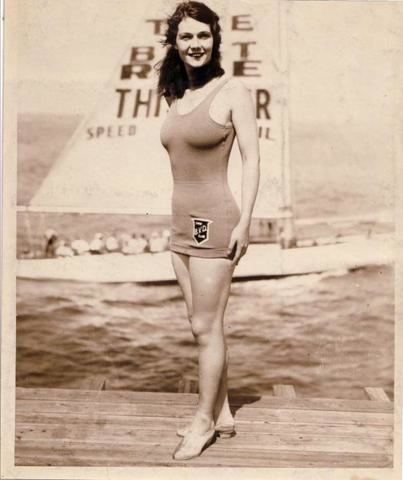 Sonora Webster CarverIt is said that when you fall from a horse, you get back on right away. This has never been truer when it came to Sonora Webster Carver.
Sonora Webster CarverIt is said that when you fall from a horse, you get back on right away. This has never been truer when it came to Sonora Webster Carver. In 1923, 19-year-old Sonora Webster was intrigued by an ad placed in a local newspaper by William Doc Carver, the owner of a carnival act. He was seeking a girl who could swim and dive and was willing to travel. Knowing she was perfect for the job, she applied. For a girl like her, it was her chance to rise out of the trap of poverty.
Pretty and spunky, she got the job and would perform at Steel Pier in New Jersey as a diving girl. She was to mount a running horse as it reached the top of a forty to sixty foot and plunge into a 12-foot deep water tank. On a horse named Red Lips, Al Carver, Doc’s son, taught her how to ride and dive on a horse. She learned how to keep her head tucked down to one side so that when Red Lips raised his head as he jumped up at the bottom of the pool, she would get smacked in the face. In1924, almost a year later, Sonora and Red Lips made their first dive. They became an instant sensation.
Sonora fell in love with the patient and talented instructor and she married Al in 1928. For nearly three years, everything was fine and her act became more and more popular. But things would soon change.
In 1931, during a dive, Red Lips Red Lips jumped off the platform unbalanced and went into a steep nosedive. Sonora hit the water with both eyes open. The hard strike displaced her retinas. She was 27 years old and fully blind.
The doctors told her that her career as a diving girl in a carnival act was over. But not even blindness could stop her, from doing what she loved. Why? Because riding was the most fun she could have and she loved it so. She didn't want to give it up. Once she was on the horse, there really wasn't much to do but hold on. The horse was in charge. So With courage, fearlessness, and a great deal of tenacity, Sonora continued to dive horses for 11 more years without the crowd knowing she was blind. She dove until 1942 during World War II when she retired at the age of 73. In all the years of the act, no horse suffered any injury.
She and Al moved to New Orleans where she learned Braille and worked as a Dictaphone typist until her retirement in 1979. Sonora died at the age of 99. To this day, she is a symbol of resilience and the strength of the human spirit.









Published on October 01, 2019 11:07
November 20, 2018
A Top 35 Historical Book Blog
 What a lovely surprise it was to learn that my blog, HistoryandWomen.com has won such a prestigious award by Feedspot - Historical Book Blogs!
What a lovely surprise it was to learn that my blog, HistoryandWomen.com has won such a prestigious award by Feedspot - Historical Book Blogs! The criteria for being chosen was based upon:
1. Google reputation and Google search ranking2. Influence and popularity on Facebook, Twitter, and other social media sites3, Quality and consistency of posrts.4. Feedspot's editorial team and expert review.
A heartfelt thank you to Feedspot! I am grateful that you found my blog and took the time to read my posts. And I am grateful to the almost 4 million viewers who have visited the site. I am humbled by your interest!









Published on November 20, 2018 10:35
October 7, 2018
Happy Thanksgiving Canada
Published on October 07, 2018 01:00
September 30, 2018
The Promise of Tomorrow by AnneMarie Brear
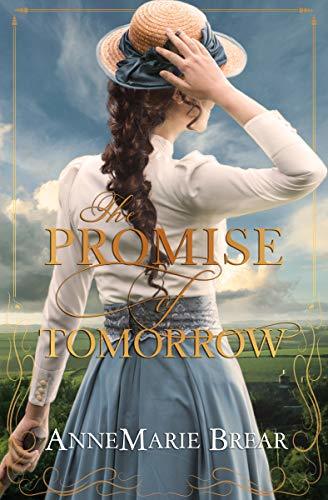
Charlotte Brookes flees her lecherous guardian, McBride, taking her younger sister with her. After a year on the road, they stumble into a Yorkshire village where the Wheelers, owners of the village shop, take them in. This new life is strange for Charlotte, but preferable to living with McBride or surviving on the roads Harry Belmont is an important man in the village, but he’s missing something in his life. His budding friendship with Charlotte gives him hope she will feel more for him one day, and he will marry the woman he yearns for.
When McBride discovers where Charlotte lives, his threats begin. Harry fights to keep Charlotte safe, but World War I erupts and Harry enlists.
Left to face a world of new responsibilities, and Harry’s difficult sister, Charlotte must run the gauntlet of family disputes, McBride's constant harassment, and the possibility of the man she loves being killed.
Can Charlotte find the happiness that always seems under threat, and will Harry return home to her?
AnneMarie Doust has once again successfully captured the plight of women in a tumultuous period of English history. The novel opens with a young woman, Charlotte Brookes, and her young sister, fleeing their home in desperation. Homeless, penniless, and hungry, the two spend a year in desperate indigence. And then finally, in a small Yorkshire village, they find a childless couple who rescues them from their dire situation and gives them a home. And then Charlotte encounters Harry Belmont, a prominent man of wealth in the village. Friendship soon turns into much, much more, as the two face their own individual insurmountable problems.
Once again, AnneMarie Brear has written an engaging historical fiction novel that highlights a tumultuous era and how women of the time were impacted. I've long been a fan of this author and have read all her novels. At the heart of each book is a sympathetic heroine and an honorable hero who find themselves fighting a prevalent, dark social issue: be it poverty, hunger, abuse, and more. With each story, I have been heartened and enlightened, and taught how courage and perseverance can help me succeed in my own life. AnneMarie Brear is a talented author who knows how to wrench a reader's heart, taking the reader from desolation to utter joy. The Promise of Tomorrow is another wonderful ready by this talented writer. Highly recommended.
Amazon.caAmazon.comAmazon.co.ukAmazon.com.au









Published on September 30, 2018 09:58
August 6, 2018
A Novel about Prince Edward Island by Anita Davison
In honor of last year's 150 celebration of the Canadian Confederation, BWL Publishing has produced a series of novels, each set in a different province. One of my favourites was written by Anita Davison who lovingly incorporated one of Canada's most cherished authors, Lucy Maud Montgomery in a novel set in Prince Edward Island.
When I read the novel, I was overjoyed at the way Lucy Maud was portrayed - a lovely woman who longed to write, and who battled sadness. The places Grace and Lucy visited were beautifully described and I could visualize the quaintness of the lovely island.
Anita Davison is a multi-published author who has gained international acclaim! This is a lovely read not only for Canadians, but for everyone who wants to learn more about this beautiful province that was home to one of the world's most beloved authors.
I've invited Anita to tell us a bit about her novel.

Envy The Windby Anita DavisonandVictoria Chatham
When I was asked to write a novel as part of the Canadian Historical Brides series, I was flattered but somewhat bemused. For one thing although I have visited Canada several times, I have never been to Prince Edward Island, the province I was asked to write about. The books are being released as part of the 150 year celebration of the Confederation of Canada by BWL Publishing, and are being distributed in Canadian schools in English and French. I had no idea how to approach writing about the island, so my first task was to read everything I could find about PEI and what sort of place it was in the year 1905.
As with all my novels, once I began the research, I became completely hooked and when I discovered there was a near collision of an Atlantic steamship in Halifax Harbour at just the right time, I was handed my beginning. Trawling through old photographs and some fascinating online articles written at the time, including the Easton’s catalogue, the 1906 copy is available online – gave me a picture of life there I had gleaned as a child when reading Anne of Green Gables. This led me to discovering all I could about the author of that book, one of Canada’s heroines, and during 1905, Lucy Maud Montgomery, or Maud as she preferred to be called, was living at the MacNeill farm in Cavendish, looking after her widowed grandmother and running the Cavendish post office. At this stage in her career she had gained some success writing short stories, and had embarked on a novel – Anne of Green Gables which was published three years after my novel is set.
I couldn’t ignore Maud, so my character, Grace, finding herself in new surroundings wondering what to do with her life, has a chance encounter with Maud and they embark on a friendship. In 1905, there was a railway on the island but it ran from one end to the other, so the rural countryside was still a challenge to cross. Isolated in Cavendish, Maud and Grace keep in touch by an exchange of letters, although I have included a visit Grace makes to the village Maud loved and was homesick for whenever she left.
From nerves that I couldn’t possibly get this right, I came to know PEI through my research, reading and magazine articles, and hope I was able to give an partly accurate picture of what it was like living in this island paradise at a time just before the seven motor cars on the island were banned for upsetting the horses and alcohol was forbidden so was driven underground into ‘blind pigs’ or for medicinal purposes only.
One day I am determined to visit Prince Edward Island, and walk the streets where Grace did with a view of the past in my mind’s eye.
Book Blurb
Grace Aitken's life changed forever when she was twelve and her parents were killed in a carriage accident in a London street. She then became the ward of her father’s business partner, Angus MacKinnon. In this Victorian household, Grace was continually upbraided for her ‘wicked ways’, which were no more outrageous than going for walks in the village without a maid, or reading a Women’s Suffrage pamphlet.
At seventeen, Angus MacKinnon convinced Grace she owed him a debt of gratitude which could be expunged by marrying his son, Frederick, a quiet, shy boy dominated by his father. Surprisingly, Grace discovered a brotherly friendship with her husband, whose delicate health after five years of marriage culminated in his contracting pneumonia, although their childlessness was a fault placed squarely at Grace’s door.
At twenty-three and a widow, her in-laws assumed Grace would take on the role of dependent housekeeper and nurse, especially to her semi-invalid mother-in-law; a condition Grace suspects she has chosen.
Several weeks after her husband's death, Grace finds a solicitor's letter hidden amongst Frederick's belongings which details the inheritance her parents left in trust for her until her 21st Birthday.
Beneath the guise of running an errand, Grace visits the solicitor’s office where she discovers she is not poor and dependent upon her in-laws after all. Her rebellious side emerges and she makes a bid for freedom by booking passage for Halifax Nova Scotia, Canada on the SS Parisian and a new life far away from England and everything she knows.
On board she meets Aoife, a chirpy Irish girl from Liverpool on her way to become a mail order bride with whom she strikes up an unusual friendship. On their arrival in Canada, Grace is faced with a dilemma when the ship is in a near collision with another vessel in the harbour, creating panic as the captain makes a frantic dash for the quayside. In the ensuing chaos, Grace encounters a handsome stranger who comes to Grace and Aoife’s assistance and offers Grace a way out of her problems.
Will Grace have the courage to accept the help of a stranger, or will she take the easy way out and go back to a comfortable, if restrictive life?
Anita’s Website – https://www.anitadavison.co.uk
Buy on Amazon - Click Here
Buy on Kobo - Click Here









Published on August 06, 2018 14:00
July 25, 2018
The School of Venus or the Ladies Delight Reduced into Rules of Practice

I've been working on a new novel which takes place in 17th century France and New France when I stumbled upon this little gem of a book. The author wrote it in 1680 but chose to remain anonymous. The cover is self-explanatory, but if you choose to read further, you will find it full of drawings and descriptions about the "deed" itself. .
The book clearly proves that men and women of this era were far from inhibited when it came to sex. The story is told in dialogue form between the two main characters who are a young teenage virgin named Katy, the young man named Roger who wishes to make her a woman, and her sexually experienced cousin, Frances who likes to be called "Frank".
In the first part of the book, Frank teaches Katy about erections, the names of erotic body parts, and how sex happens. In the latter part of the book, Katy describes how she was deflowered by Roger and the various sexual positions they tried.
I found the book amusing, of course, and it did provide a bit of fodder for my current work in progress.
You can access the book for free for your reading device at:
Google Play Books
Internet Archive
Amazon.ca
Amazon.com









Published on July 25, 2018 08:56
March 24, 2018
Masks of 18th Century Venetian Women

My roots are in the Veneto and Abruzzi of Italy and hence I've written more than one novel set in historical Italian peninsula.
I'm currently working on my 7th novel, TREACHEROUS AFFAIRS. The novel is a retelling of the 18th century novel by Pierre Choderlos de Laclos entitled Dangerous Liaisons. Although I'm following the basic plot, I've changed the setting from Paris to Venice and the style from epistolatory to third person narrative, so it is completely told in my own words and scenes.
18th century Venice was at the height of decadence, where Casanova ran rampant and sexual freedoms reigned. Masks were worn all the time - at gambling houses and festivals and balls and political events. Masks do make an appearance in my novel.
Specific types of masks were made for women.

MORETTA MASK
Only women wore the Moretta mask or the "muta" (Mute) as it was nicknamed. It is round shaped and of covered with fine black velvet. They called it the Mask of Seduction and mystery for good reason. It covered a woman's face completely. There were no laces to hold the mask on the face. Instead, a woman had to bite a strategically placed button at mouth level to keep it on. Hence, she was unable to speak, adding to her mystery and allure. In this way, a lady's true intentions were unknown, adding to the magic.

THE COLOMBINA
The Colombina was perhaps one of the most popular masks of the time. This is a half mask decorated in an array of colors, fabrics, decorations, and jewels. Often they were made to match a lady's gown! Light-weighted, it covers only the eyes and cheeks, and sometimes the nose. One's identity was obvious.

THE VOLTO
The Volto provided covers the entire face which assured a woman could keep her identity completely hidden. Only a woman's voice could reveal her true identity.









Published on March 24, 2018 11:13
September 27, 2017
I, Eliza Hamilton by Susan Holloway Scott

In this beautifully written novel of historical fiction, bestselling author Susan Holloway Scott tells the story of Alexander Hamilton’s wife, Eliza—a fascinating, strong-willed heroine in her own right and a key figure in one of the most gripping periods in American history.
“Love is not easy with a man chosen by Fate for greatness . . .” As the daughter of a respected general, Elizabeth Schuyler is accustomed to socializing with dignitaries and soldiers. But no visitor to her parents’ home has affected her so strongly as Alexander Hamilton, a charismatic, ambitious aide to George Washington. They marry quickly, and despite the tumult of the American Revolution, Eliza is confident in her brilliant husband and in her role as his helpmate. But it is in the aftermath of war, as Hamilton becomes one of the country’s most important figures, that she truly comes into her own. In the new capital, Eliza becomes an adored member of society, respected for her fierce devotion to Hamilton as well as her grace. Behind closed doors, she astutely manages their expanding household, and assists her husband with his political writings. Yet some challenges are impossible to prepare for. Through public scandal, betrayal, personal heartbreak, and tragedy, she is tested again and again. In the end, it will be Eliza’s indomitable strength that makes her not only Hamilton’s most crucial ally in life, but also his most loyal advocate after his death, determined to preserve his legacy while pursuing her own extraordinary path through the nation they helped shape together.
REVIEW
I am passionate about reading historical biographical novels about the lesser known women of history. I am especially thrilled when authors break away from the over abundance of novels about the same women over and over again - i.e. Cleopatra, the Tudors, Marie Antoinette, etc. to name a few.
So I was thrilled to read about Eliza Hamilton, a woman deeply in love with one of the most brilliant writers and politicians in the time of George Washington and Benedict Arnold. The novel begins with the start of a strong physical and emotional chemistry between Eliza and Alexander Hamilton, a ruthless soldier and military aid. The author has researched this era completely, putting together a tale true to the times, complete with the actual politics and politicians and famous personages. What results is a true picture and analysis of the times. But beyond the political atmosphere, we meet a strong, determined woman who loved her husband, with all his qualities and faults.
There is much to laud about this wonderfully told story through the point of view of a determined, supportive woman who stood by her man despite scandals, political intrigue, and the financialo struggles they faced.
Highly recommended!









Published on September 27, 2017 11:09
August 30, 2017
Who was Sultana Nurbanu?
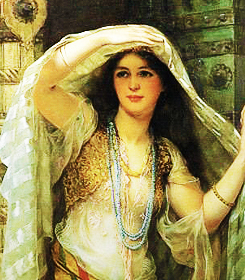
Some claim Nurbanu was a Venetian woman named Cecilia Baffo Veniero abducted abducted from Paros island when it was captured by Barbarossa. Others say she was a Greek woman named Kale Kartanou from Corfu. To this day, no one knows for certain. Once in the folds of the Ottoman Empire, she became known as Nurbanu. Her destiny was to became favourite consort and legal wife of Ottoman Sultan Selim II and mother of Murad III.
Wherever she came from, she one day found herself the head of the Sultan's harem. Despite the Sultan's right to take as many concubines as he wished, Nurbanu was his favorite because of her sharp wit and breathtaking beauty. Because of her propensity for good judgement, he reated her as an advisor and respected her opinion in many matters.
In return, she was a devoted wife and wonderful mother. When she gave birth to Murad, she knew that one day, when it came time to succession, he might be murdered, as had happened many times in the past where entire families were massacred. Nurbanu was determined never to let this happen.
Murad was away serving as goveror of Manisa when her husband died in 1574. Nurbanu realized her life's son may be in danger by a usurper of power. Before anyone could learn of her husband's death, she hid his body in the harem in an icebox and then summoned her son to return home. Only when Murad made it home, did she announce her husband's death. In this way, Murad became the next sultan and she became the highest ranking woman in the sultanate and very powerful indeed. She managed the government and acted as co-regent with her son.
Her reach was long. She was a pen pal of Queen Catherine de Medici of France and the Venetians proudly followed her reign, writing about her often. That's because she was good for the Venetian government. For as much as she was loved by the Venetians, she was spurned by their rivals, the Genoese who resented her unwavering support of all things Venetian. When she died in Istanbul on December 7, 1583, it was suspected she might have been poisoned by a Genoese spy.
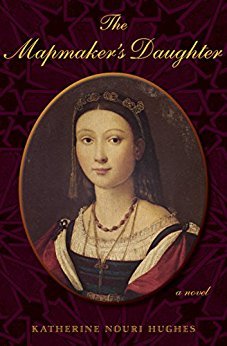
A novel of the Venetian girl who became the most powerful woman in the Ottoman Empire—perfect for fans of Netflix’s Magnificent Century.
The Ottoman Empire was at the height of its power during the sixteenth century when Cecilia Baffo Veniero was kidnapped from her Venetian homeland and chosen to be the wife of Selim II, successor to Sultan Suleiman the Magnificent. She would be known as Nurbanu.The Mapmaker’s Daughter vividly imagines the confession of Nurbanu as she lies on her sickbed narrating the spectacular story of her rise to the pinnacle of imperial power, determined to understand how her extraordinary destiny was shaped. With unflinching candor, Nurbanu reviews the desires and motives that have both propelled and harmed her, as she considers her role as a devoted yet manipulative mother, helping to orchestrate her son’s succession to the throne. Serving as the appointed enforcer of one of the empire’s most crucial and shocking laws, Nurbanu confronts the consequences of her loves and her choices—right up to one last shattering revelation.









Published on August 30, 2017 11:53








